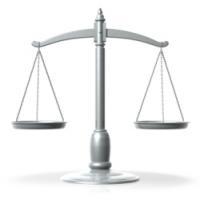
How Equal is Equal?
by GM Magesh and GM Arun
After writing opening articles for the last two years, I should admit that it tends to become more monotonous and less creative. So there I was just staring at the roof one day wondering 'what should I write about next week?' After pondering over several options I stumbled upon one question, 'what would I consider as the biggest leap of improvement in my chess career? Not from the perspective of the results, but from the perspective of 'learning' and the answer felt a little obvious to me. Neither did I fall off my feet when I learned to calculate lengthy variations, nor did I feel like I was at the top of the world when I learned a new opening. My point is not to belittle any of the above areas of work, but it was the ability to pay attention to the tiny details that enlightened me the most. Understanding the course of a game, having a sense of direction throughout gives immense satisfaction for a chess player. A square weakness; a shattered pawn structure; a small space advantage; a bad piece or an open file and I can keep going like this forever. Today we will be discussing a variation in which the game is decided based on such minor intricacies.
A quick glance might make you think the position is completely equal. The pawn structures are symmetrical and so are the type of minor pieces, both players holding a pair of bishops and a knight. And on top of that black is doing very well in development, it takes more than an ordinary eye to see any factor that might put white above the curve. A few years ago, this is exactly the type of position that would have made me wonder, why would a Grandmaster choose an opening that does not give any advantage? However, now it just looks like a high percentage play to me. Almost impossible for white to lose, but always maintaining a nagging advantage and waiting for your opponent to crack eventually. Let us move through a few more obvious moves and then discuss the middle game in detail.
A couple of minor inaccuracies from black have given white a very strong position, but the question is, how do you proceed? I would suggest our readers take a couple of minutes here to try and come up with a good plan for white. Use simple ideas, such as: attack the weakness; do not allow counter play for your opponent.
Our second game for today is a very instructive game in just such a symmetrical position. Bulgarian Grandmaster Vladimir Georgiev executed his plans in a simple and elegant way in this game:
One weakness, one shot and one result! Ain't that a beautiful feeling for a chess player to be able to control the game like that?
If you are thinking about a slightly better position where one player squeezes out a win by draining out the last ounce of blood from the opponent, then of course you are thinking about Vladimir Kramnik! (in our times) We will discuss one of his fantastic endgame displays in our next article.






